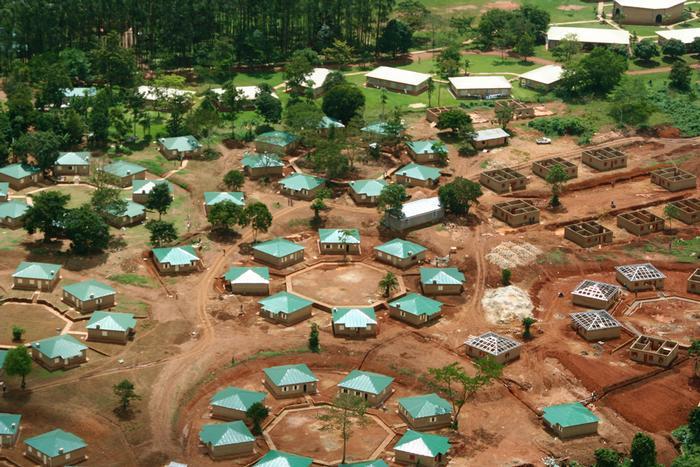Bryans Mukasa ProposalSUUBI; THE ARCHITECTURE OF HOPEOne of the most successful and perhaps peculiar childcare centre models in my country, Uganda, was established by Watoto Childcare Ministries in 1994. On Nsangi hill, fifteen kilometres west of Kampala city lies Watoto Children’s village, inspired by the African notion that “It takes a village to raise a child”. The village is called Suubi, which means hope in one of the local Bantu dialects, Luganda. Suubi village is symbolic of a traditional dwelling that attempts to amalgamate aspects of community life from various ethnic groups in Uganda and showcases the potential of architectural styles and techniques rooted in local culture. The African sense of community captured in the village provides not only the physical, but also the psychological ingredients required for the cognitive development of the orphaned children. The architectural ensemble is organised in clusters. Each cluster has nine houses, with eight of them arranged around a courtyard, providing outdoor communal multipurpose space for children to play and interact safely away from the road. The ninth house is slightly oriented and situated away from the courtyard to define hierarchy by placement and in it dwells the senior mother who oversees the others in the cluster. A standard house is a simple cuboidal shape, approximately sixty four square metres, whose interior is partitioned by masonry walls to create bedrooms and a public space accommodating the living and dining areas. Each child has their own bed and space to manage their belongings thereby building a sense of ownership and responsibility. A family setting is purposely created so that the children learn to love and respect as they live with their mother and siblings. The building of the village is a continuous and collective effort both locally and globally. The bricks used are made on site by members of the community, the roof structural elements are prefabricated at the local workshop, and each house is erected by teams from all over the world. As a whole, the village provides more than shelter, it is a reflection of the very being of the place and through it the society is directed towards a common cause. The project also benefits the community socio-economically. For instance, the village homes spill-over into the neighbourhood allowing the orphans to interact and attend school with the rest of the children in the community. In addition, it is a source of employment to the locals, both at the construction and operational stages. As a result, community involvement in the project has helped to break perceptions of orphanages as institutions, given the children a sense of belonging and eliminated any feeling of isolation. Nevertheless, the village has experienced numerous challenges over the years, with the greatest being the global credit crunch which led to a reduction in financial support. However, over two thousand former child soldiers and orphans have been nurtured by its holistic social setting and their achievements serve to ask every Built Environment professional; “Suubi village changed my story. Whose story will you change?”
Additional Help and InformationAre you in need of assistance? Please email info@berkeleyprize.org. |
|

